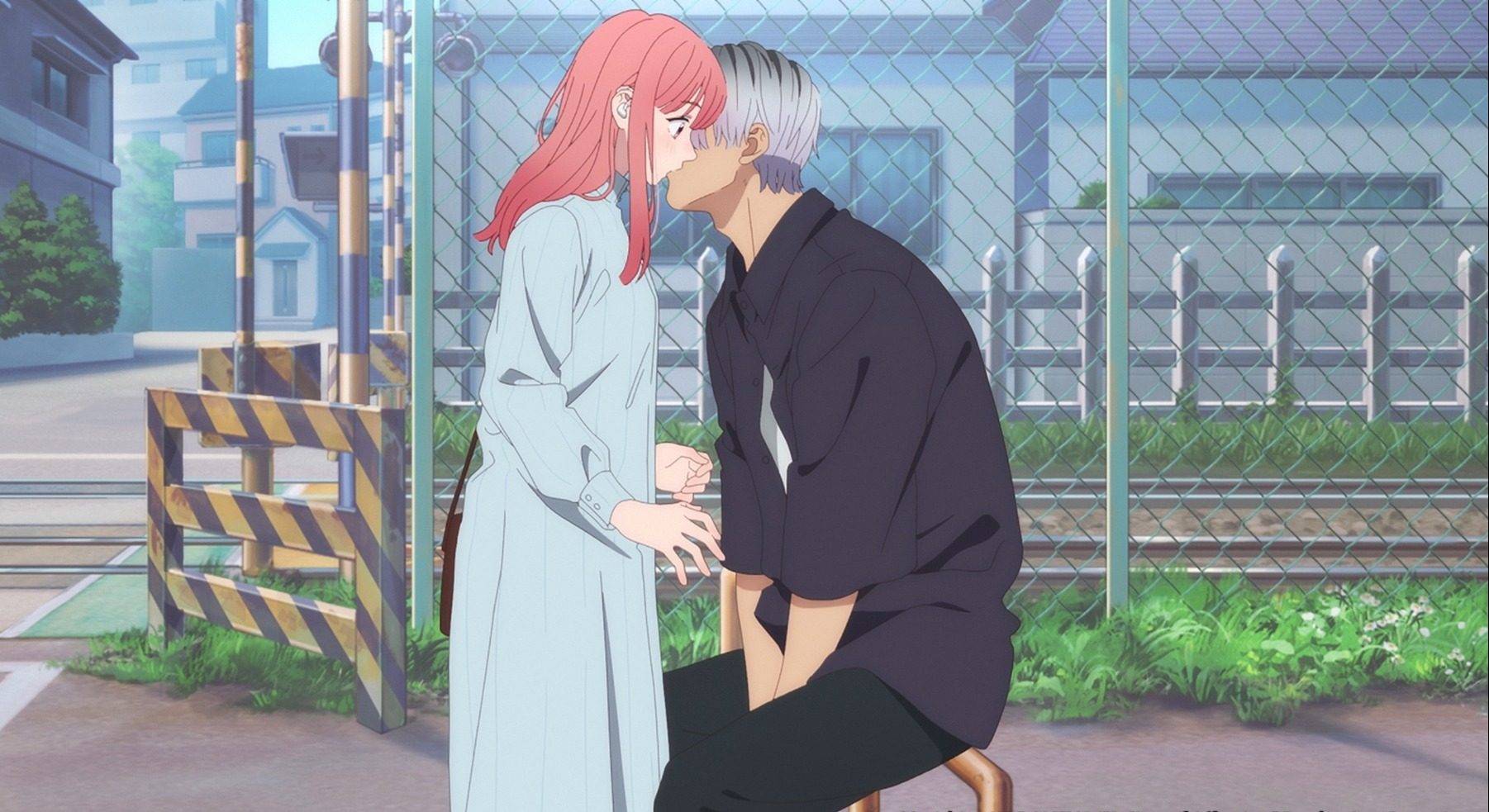
TV Writer Luisa Connors praises A Sign of Affection in the context of the Shoujo anime genre for its unique portrayal of a deaf character rarely represented in the wider medium
A Sign of Affection (alternatively known by manga readers as Yubisaki to Renren) has recently taken the Shoujo community by storm. Adored for its positive deaf representation and healthy romantic progression, A Sign of Affection has certainly been an anime to look out for during the Winter/Spring season. With the anime coming to an end, this article wishes to reflect back upon it lovingly and consider its impact within Shoujo anime as a whole.
The story centres around university student Yuki Itose, a second-year who communicates through Japanese Sign Language due to being deaf since birth. On a morning train journey, she meets Itsuomi Nagi, a polyglot who frequently travels the world to learn about various languages and cultures. The two develop a mutual interest in each other. Yuki is fascinated by Itsuomi’s worldly knowledge and wishes to learn through his experiences. Itsuomi likewise is captivated by Yuki’s unique viewpoint of the world as a deaf woman. The series follows the couple’s romantic journey, with particular interest paid towards Itsuomi’s journey learning JSL to communicate with Yuki.
A Sign of Affection has set itself apart from most anime, where deaf representation is unfortunately still relatively sparse
In particular, the show’s writing of Yuki and her deafness has been applauded by the anime community, positioning it as a unique feature which surrounding characters take an active interest and supportive stance towards. Episode nine for example, follows Yuki and her friends going on a small trip to the mountains, where she organises a small language-learning day camp for other characters to learn some JSL. On the other hand, the anime also depicts Yuki’s struggles within a hearing world, for instance her difficulty in securing a job or communicating with mask-wearers.
As a romance anime, A Sign of Affection largely garnered attention from the Shoujo community. Shoujo refers to anime or manga intended towards a female audience. Popular shows include Sailor Moon, Kimi ni Todoki (From Me To You), Nana, and Ouran High School Host Club. Shoujo is an incredibly broad genre, with themes ranging from romance and self-discovery (take Fruits Basket for example) to violence and heartbreak (such as Banana Fish). Where A Sign of Affection breaks the mould, however, is its chosen depiction of a university setting, a welcomed departure from the typical high school setting for viewers such as myself, who finds this environment more relatable. Moreover, by placing a deaf character in the protagonist role, A Sign of Affection has set itself apart from most anime, where deaf representation is unfortunately still relatively sparse. Previous examples have included Shoko Nishimiya from A Silent Voice and Bojji from Ranking of Kings, however even fewer instances exist within the Shoujo genre.
The pastel palette and expressive character designs reiterate Yuki’s perspective
Thus, to encounter A Sign of Affection has been a breath of fresh air for Shoujo fans. The anime is equal parts heartwarming as it is educational, leaving its viewers with a warm and cheerful feeling at the end of each episode. The artstyle borrows inspiration from the source materials, echoing the watercolour style of the manga creator, Suu Morishita. The ending animation acts as a prime example, exemplifying Morishita’s delicate and soft approach to the manga and also echoing the show’s aura as a whole. The pastel palette and expressive character designs reiterate Yuki’s perspective, as an innocent nineteen year old who has lived a relatively sheltered life. As she discovers the beauty of romance and warmth of friendship, so do the audience through the show’s colourful and vibrant visuals.
[Shoujo] has provided a safe space due to its frequently positive female representation and sincere themes
Shoujo has always been an incredibly meaningful genre. It has provided a safe space due to its frequently positive female representation and sincere themes. As an avid watcher of anime for around seven years, I have felt that not all anime is entirely accessible or enjoyable for women. Some anime, for example, may depict female characters as sexual objects for male pleasure, exaggerating their proportions and dulling their character development for the sake of their male counterparts. Shoujo, alongside many other genres, however, proves that this is not always the case, and that anime can portray promisingly well-developed female characters.
A Sign of Affection has certainly solidified its place amongst other fantastic Shoujo anime, and continues to deserve critical acclaim in future.
Read more TV articles here:

Comments